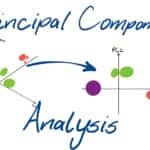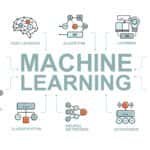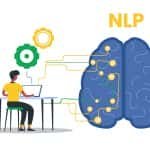Data Science interviews are pivotal moments in the career trajectory of any aspiring data scientist. Having the knowledge about the data science interview questions will help you crack the interview.
Since there has been a consistent growth in the Data Science domain, there is a growing demand for qualified professionals. However, cracking the interview can be challenging. These interviews serve as gateways to coveted positions in top-tier companies.
In this comprehensive guide, we delve into the top Data Science interview questions and expert answers to equip you with the knowledge and confidence needed to ace your next interview.
Besides, we will also be focusing on how you can develop the right Data Science skills that are a must for any individual to grow as a professional.
Data Science skills that will help you excel professionally.
Technical Proficiency
Data Science interviews typically evaluate candidates on a myriad of technical skills spanning programming languages, statistical analysis, Machine Learning algorithms, and data manipulation techniques. Here are some key areas often assessed:
Programming Proficiency
Candidates are often tested on their proficiency in languages such as Python, R, and SQL, with a focus on data manipulation, analysis, and visualization.
Statistical Concepts
A strong understanding of statistical concepts, including probability, hypothesis testing, regression analysis, and experimental design, is paramount in Data Science roles.
Machine Learning Algorithms
Candidates should demonstrate proficiency in a variety of Machine Learning algorithms, including linear regression, logistic regression, decision trees, random forests, support vector machines, and neural networks.
Data Wrangling and Cleaning
Interviewers may present candidates with messy datasets and evaluate their ability to clean, preprocess, and transform data into usable formats for analysis.
Emphasizing Soft Skills
In addition to technical prowess, Data Science interviews also assess candidates’ soft skills and ability to communicate complex concepts effectively. Key soft skills include:
Problem-solving abilities
Candidates should demonstrate a logical approach to problem-solving and the ability to think critically under pressure.
Communication skills
Articulating complex ideas, explaining methodologies, and presenting findings in a clear and concise manner are essential components of Data Science roles.
Collaborative spirit
Employers value candidates who can work effectively in interdisciplinary teams, collaborate with stakeholders, and adapt to dynamic project requirements.
Data Science syllabus

The Data Science syllabus may vary from one institute to another. However, there are a few fundamental principles that remain the same throughout. Here is a brief description of the same.
Course Topics:
- Introduction to Data Science
- Data Acquisition and Cleaning
- Exploratory Data Analysis (EDA)
- Statistical Analysis
- Programming for Data Science
- Machine Learning Basics
- Supervised Learning Algorithms
- Unsupervised Learning Algorithms
- Introduction to Deep Learning
- Big Data and Cloud Computing
Top Data Science Interview Questions and Expert Answers
1. What is the Central Limit Theorem, and why is it important in statistics?
The Central Limit Theorem states that the sampling distribution of the sample mean approaches a normal distribution as the sample size increases, regardless of the shape of the population distribution. This theorem is crucial in inferential statistics as it allows us to make inferences about the population parameters based on sample data.
2. Differentiate between supervised and unsupervised learning algorithms.
Supervised learning algorithms learn from labelled data, where each input is associated with a corresponding output label. Examples include linear regression, logistic regression, and support vector machines.
Unsupervised learning algorithms, on the other hand, operate on unlabeled data and identify patterns and relationships without explicit supervision. Clustering algorithms such as K-means and hierarchical clustering are examples of unsupervised learning techniques.
3. How do you handle missing values in a dataset?
Handling missing values is a critical aspect of data preprocessing. Common techniques include imputation, where missing values are replaced with a calculated estimate (e.g., mean, median, mode) based on the available data.
Alternatively, missing values can be handled through deletion, either by removing rows or columns containing missing values. The choice of method depends on the nature of the data and the specific requirements of the analysis.
4. Explain the bias-variance tradeoff in Machine Learning.
The bias-variance tradeoff is a fundamental concept in Machine Learning that refers to the balance between bias and variance in model performance. Bias measures the error introduced by approximating a real-world problem with a simplified model.
High-bias models tend to underfit the data. Variance measures the model’s sensitivity to fluctuations in the training data. High-variance models tend to overfit the data. The goal is to find the optimal trade-off between bias and variance to achieve the best possible model performance.
5. How do you handle missing values in a dataset?
There are several techniques for handling missing values in a dataset:
- Imputation: Replace missing values with a calculated estimate, such as the mean, median, or mode of the feature.
- Deletion: Remove rows or columns containing missing values from the dataset.
- Prediction: Use Machine Learning algorithms to predict missing values based on other features in the dataset.
- Advanced Imputation Techniques: Employ advanced imputation techniques such as k-nearest neighbours (KNN) or interpolation methods to estimate missing values based on neighbouring data points.
6. What is the Central Limit Theorem, and why is it important in statistics?
The Central Limit Theorem states that the sampling distribution of the sample mean approaches a normal distribution as the sample size increases, regardless of the shape of the population distribution.
This theorem is important in statistics because it allows us to make inferences about population parameters based on sample data, even when the population distribution is unknown or non-normal. It forms the basis for many statistical tests and estimators used in hypothesis testing and confidence interval estimation.
7. Explain the concept of feature engineering in Maachine Learning.
Feature engineering is the process of creating new features or transforming existing features in a dataset to improve the performance of Machine Learning models. It involves selecting, extracting, and transforming raw data into informative features that capture the underlying patterns and relationships in the data.
Examples of feature engineering techniques include one-hot encoding for categorical variables, polynomial features for capturing nonlinear relationships and scaling for standardizing the range of numerical features.
8. What evaluation metrics would you use to assess the performance of a classification model?
Several evaluation metrics can be used to assess the performance of a classification model, including:
- Accuracy: The proportion of correctly classified instances out of the total number of instances.
- Precision: The proportion of true positive predictions out of all positive predictions made by the model.
- Recall: The proportion of true positive predictions out of all actual positive instances in the dataset.
- F1 Score: The harmonic mean of precision and recall, providing a balanced measure of the model’s performance.
- ROC Curve and AUC: Receiver Operating Characteristic (ROC) curve and Area Under the Curve (AUC) measure the tradeoff between true positive rate and false positive rate across different threshold values.
9. What is cross-validation, and why is it used in Machine Learning?
Cross-validation is a technique used to assess the performance and generalization ability of Machine Learning models. It involves splitting the dataset into multiple subsets, training the model on a subset of the data, and evaluating its performance on the remaining subset.
The process is repeated multiple times, with each subset serving as both training and testing data. Cross-validation helps to estimate the model’s performance more accurately by reducing the risk of overfitting and providing a more robust evaluation of the model’s performance across different subsets of data.
10. Can you explain the difference between precision and recall?
Precision and recall are two important evaluation metrics used in classification tasks:
- Precision: Precision measures the proportion of true positive predictions out of all positive predictions made by the model. It quantifies the model’s ability to avoid false positives.
- Recall: Recall, also known as sensitivity or true positive rate, measures the proportion of true positive predictions out of all actual positive instances in the dataset. It quantifies the model’s ability to capture all positive instances in the dataset.
- Precision and recall are often inversely related, and the choice between them depends on the specific requirements of the classification problem.
Conclusion
Mastering Data Science interviews requires a combination of technical proficiency, problem-solving abilities, and effective communication skills. By familiarizing yourself with the top Data Science interview questions and expert answers outlined in this guide, you can approach your next interview with confidence and poise.
Remember, preparation is key to success. Practice coding exercises, review fundamental concepts, and hone your storytelling abilities to articulate your journey and experiences effectively.













